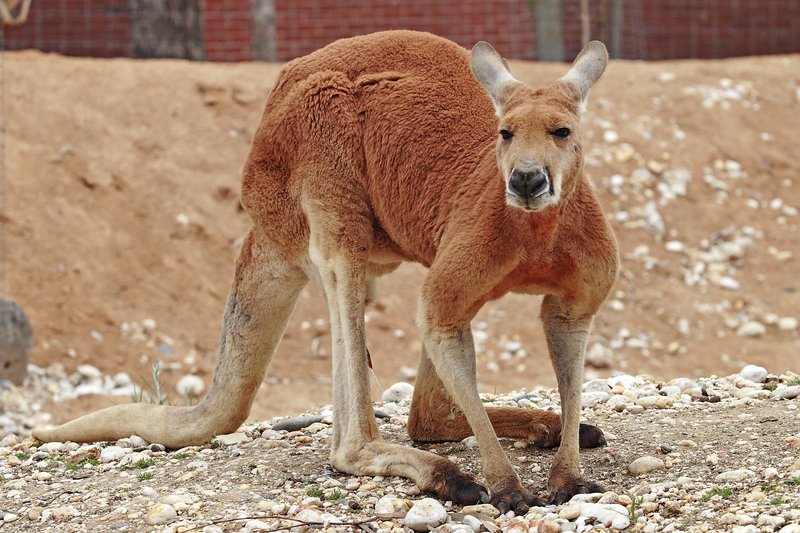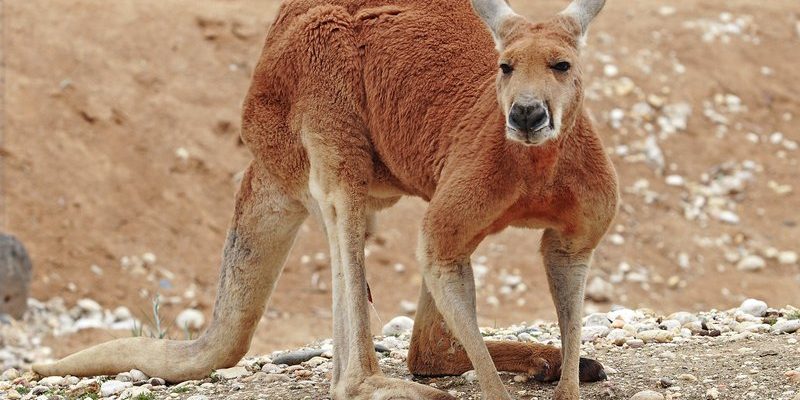
Red kangaroos are not just fascinating animals; they are survivors in a world that tests their limits. With an average height of about 6 feet and powerful hind legs, they’re built for speed and efficiency. But it’s not just their physique that keeps them going; it’s their unique behaviors, exceptional physiological traits, and smart social structures that allow these marsupials to thrive where many others would struggle.
The Red Kangaroo’s Unique Adaptations
Red kangaroos are masters of adaptation. One of their standout features is their ability to tolerate extreme temperatures. These kangaroos can bask in the sun without overheating, thanks to their specialized *adaptations*. Their thick fur reflects sunlight while insulating them from the heat, much like a well-designed insulated bottle keeps your drink cold.
Moreover, their physiological adaptation goes beyond just fur. Red kangaroos can regulate their body temperature efficiently. When it gets too hot, they take a break in the shade, resting until the cooler evening hours. This is crucial because it helps them conserve energy. Honestly, you might liken it to how we seek air conditioning during a hot day; they simply have a built-in method to cool off!
Another remarkable adaptation is their ability to go long periods without water. They derive moisture from the plants they consume, which is essential in a landscape where water sources can be incredibly scarce. This ability to extract moisture allows them to be quite resourceful, able to thrive when others might be parched and desperate.
Dietary Choices: A Key to Survival
What’s on the menu for a red kangaroo? Their diet mainly consists of grasses and leaves, which are abundant in their habitat. But here’s the kicker: they’re selective eaters. Red kangaroos will often choose younger, more nutritious plants that are easier to digest. This choice is crucial because it maximizes their nutrient intake while minimizing their energy expenditure.
Interestingly, red kangaroos eat at dusk and dawn—just like many animals that have adapted to harsh environments. This habit not only helps them avoid the heat of the day but also allows them to feast when food is more plentiful and other species may not be as active.
To stay hydrated, they often feed on plants that have higher water content. It’s like seeking out juicy fruit on a hot summer day! You might be wondering, “What if food is hard to find?” In tough times, red kangaroos can eat leaves or plant material that other animals might overlook, proving that survival is often about being smart and flexible in your choices.
Social Structures: The Power of Community
Believe it or not, red kangaroos are social animals! They usually live in groups called *mobs*, which can range from three to over a dozen members. This social structure offers numerous advantages in harsh environments. When they band together, they can spot danger more easily and help each other find food and water.
Safety in numbers is a powerful strategy. When one kangaroo senses a predator, it can alert the others, allowing the whole mob to take cover. You can think of them as a neighborhood watch—each kangaroo looking out for the others. This communal living helps them endure the stressors of their environment, showing how even in the animal kingdom, teamwork can be vital for survival.
Mobs also provide a sense of security, especially for young joeys (baby kangaroos). The presence of fellow kangaroos can help reduce stress and increase their chances of reaching adulthood. It’s kind of heartwarming, isn’t it? Kangaroos understand the importance of sticking together, especially in challenging times.
Water Conservation Techniques
Water is essential for survival, especially in the dry Australian outback. Red kangaroos have developed impressive techniques to conserve water that ensures they stay hydrated without needing to drink frequently. One way they do this is by producing very concentrated urine, which minimizes water loss.
They also have an efficient digestive system that allows them to extract as much moisture as possible from their food. This system reminds me of how we might sip on a drink slowly to savor every last drop—red kangaroos do something similar with their food, ensuring they get the most out of each bite.
Interestingly, red kangaroos have been known to alter their feeding habits based on water availability. During really dry spells, they might switch to more succulent plants that contain higher moisture content. It’s a smart move—like grabbing a juicy watermelon on a hot day!
Challenges They Face
Despite their incredible adaptations, red kangaroos still face significant challenges in their environment. Human activity, climate change, and habitat destruction threaten their survival. Urban development often encroaches on their natural habitats, limiting their access to food and water.
Moreover, the changing climate affects their food sources. Droughts can make vegetation scarce, and rising temperatures alter their habitat. These changes can throw a wrench in their well-tuned systems of survival. You might think of it like a sudden change in the rules of a game—something they weren’t prepared for.
These challenges highlight the resilience and adaptability of red kangaroos, but they also serve as a reminder of the need to protect their habitats. It’s crucial for everyone, from everyday folks to policymakers, to consider how we can help safeguard these remarkable animals and their environments.
The Future of Red Kangaroos
Looking ahead, the survival of red kangaroos depends heavily on conservation efforts. Efforts to preserve their habitats and reduce human impact are vital. Educating the public about the importance of these iconic creatures helps foster a sense of responsibility toward their protection.
Conservation programs that focus on restoring native vegetation not only benefit red kangaroos but also support the broader ecosystem. By ensuring they have sufficient food and shelter, we can help maintain the delicate balance in their environment.
As we continue to learn more about these amazing animals, it’s essential to appreciate their resilience. Red kangaroos are true survivors, showcasing the strength and ingenuity of nature. The more we understand about how they thrive in harsh environments, the better equipped we are to help secure their future.
In conclusion, red kangaroos are not just symbols of Australia; they are remarkable examples of resilience and adaptability. Their ability to navigate the challenges of a harsh environment is a reminder of the ingenuity found in nature. By learning about and supporting their survival, we contribute to preserving an essential part of our planet’s rich biodiversity.

